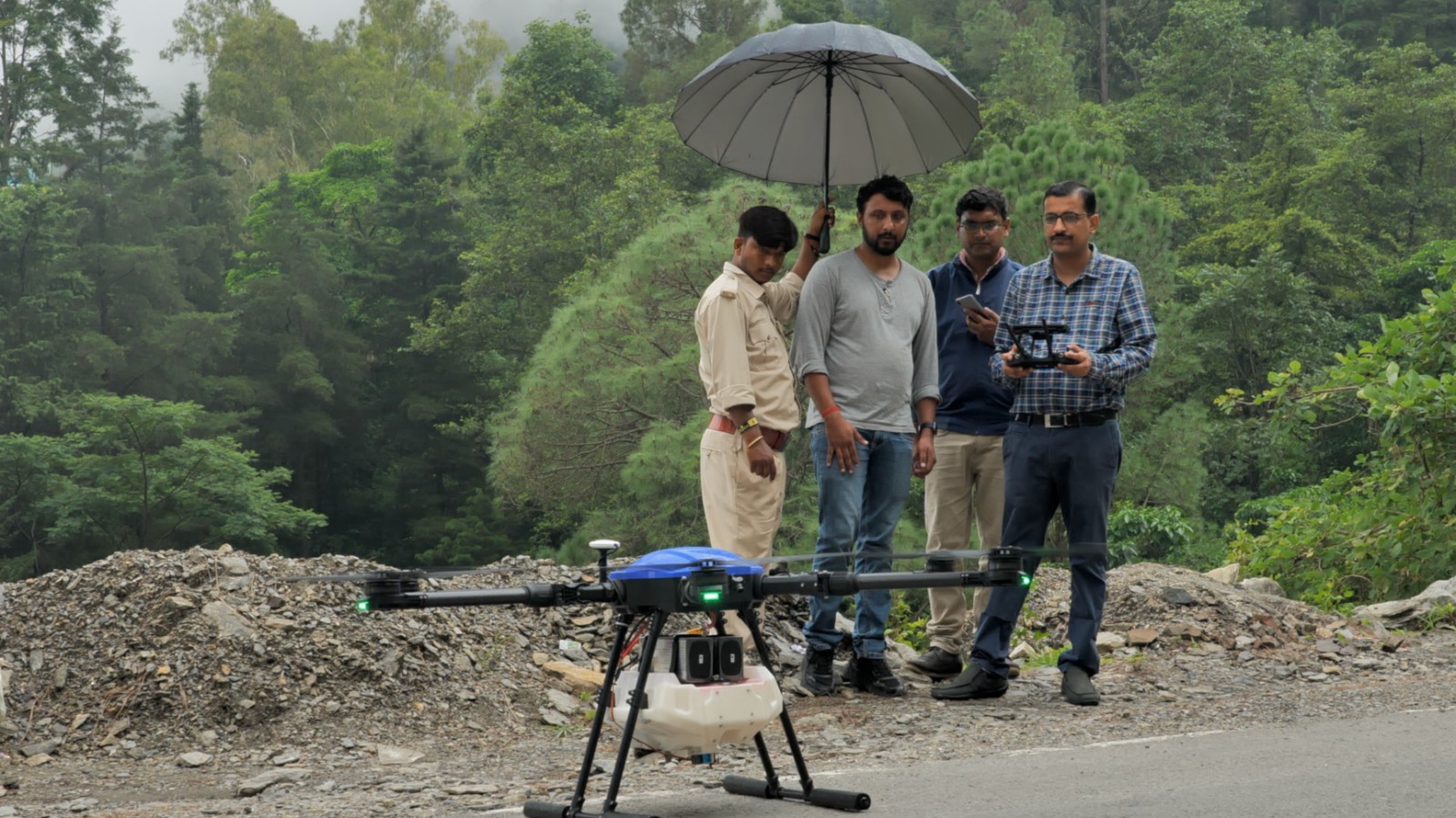CHANDIGARH
The Uttarakhand forest department’s Research Wing successfully conducted seed ball broadcasting, a first of its kind
The broadcast seeding method involves two ways for scattering seeds either by hand or mechanically, over a relatively large area. When these seeds germinate and grow, their roots hold onto soil, checking soil erosion and this increases the slope stability of a landslide-prone hillside areas.
Kundan Kumar, deputy conservator of forests (research wing), said that for the first time in the state, around 500 seed balls of five different native species, including Bauhinia retusa (Kaunal), Coraria nepalensis (Makol), Debregeasia longifolia (Tusyari) and Bamboo, have been broadcasted in the heavily landslide affected areas in Manora Range of the Nainital Forest Division.
“This innovative initiative aims to restore and reinvigorate the vegetation in the affected region, which has been impacted by landslides. By employing drone technology to distribute seed balls, the Research Wing of Uttarakhand Forest Department is taking a proactive step towards ecological restoration and conservation efforts. Regular monitoring will also be carried out to assess the germination and survivability of these species,” he said.
“The soil erosion and unstable terrain usually hinder successful seed germination and plant growth. Seed ball broadcasting offers a unique advantage in such environments, as it allows seeds to be dispersed more effectively across large areas, even on inaccessible or unstable terrain,” he said. Kumar said that the project was approved by the forest department’s Research Advisory Committee (RAC) in 2021 with two primary objectives. “First to reforest vast stretches of inaccessible and bald hill slopes, especially southern aspects, using drones and second to find the most suitable species and method for reforestation for inaccessible sites by making comparison with traditional methods.”
“This progressive approach not only accelerates the natural regeneration process, but also succour in preventing soil erosion and maintaining the ecological balance of the region. Additionally, it serves as a model for sustainable conservation practices that can be applied in other inaccessible areas, promoting biodiversity and the overall health of the forest ecosystem,” he added.
In challenging terrains like landslide-affected areas, traditional reforestation methods face numerous obstacles due to inaccessibility and steep terrain. Soil erosion and unstable terrain hinder successful seed germination and plant growth. Seed ball broadcasting offers a unique advantage in such environments, as it allows seeds to be dispersed more effectively across large areas, even on inaccessible or unstable terrain. This innovative initiative will also be implanted in other inaccessible areas of Pithoragarh and Chamoli district.

